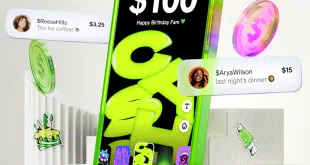n
With processors, merchants, and financial institutions finally seeing some progress in mobile payments, a threat has emerged that could ultimately undermine plans to marry handsets and transactions: Smart-phone users aren’t convinced the device is a safe channel for either banking or payments.
n
That’s the conclusion of a report released this week by Javelin Strategy & Research, Pleasanton, Calif. In it, Javelin analyst Philip J. Blank notes that mobile-banking adoption among smart phone users has leveled off even though consumers continue to snap up the gadgets at a furious rate. A prime cause is that consumers are rapidly concluding that transactions through the devices are prone to fraud, the report says.
n
Surveying more than 3,000 consumers in 2009 and 2010, the firm found the fraction of smart-phone-equipped respondents judging mobile banking to be either unsafe or very unsafe zoomed from 26% to 40% in just 12 months. “We’re seeing a real polarization, with most people entering the market believing mobile banking is not safe,” Blank tells Digital Transactions News. “That’s not a good thing.”
n
Meanwhile, mobile-banking adoption rates among these users over the past two years have barely budged. In a 2010 survey, Javelin found that 6% of consumers with a smart phone had used a mobile-banking service in the past 90 days, showing no change from a similar canvass in 2009. The adoption rate over the previous 30 days ticked up only 1 percentage point, from 10% to 11%. Nor are smart-phone owners showing any more likelihood of making mobile purchases. Indeed, the fraction of such consumers who never performed a mobile purchase transaction actually increased from 62% to 74% between the two surveys.
n
Blank cautions that the surveys were taken before recent events that may exacerbate consumers’ security fears, including Google Inc.’s discovery in March that a number of applications available on its Android Market were infected with malware that could take control of a user’s phone. Google, the maker of the highly popular Android operating system for mobile devices, quickly removed these apps as well as others that were later found to be carrying malware.
n
Interestingly, even before these events, consumers were apparently growing wary of mobile apps. In 2010, some 47% told Javelin a browser optimized for handsets was the safest channel for mobile banking, ahead of all other methods and up from just over one-third in 2009. Downloaded applications ranked second, but those citing this method as safest dropped from 32% to 23%.
n
Growth in mobile banking and payments has come to an apparent standstill despite the startling rise in adoption of the smart phone, a device whose built-in intelligence and relatively large screen make it ideal for financial applications. The proportion of consumers who own a smart phone has more than doubled since 2009, the report says, from 15% to 34%. “What the consumer is saying [to the payments industry] is you’ve got to address the security problem,” says Blank, who is managing director for security, risk, and fraud at Javelin.
n
Consumers’ fears have heightened as payments strategists lay plans for mobile payments, particularly at the point of sale, where the bulk of consumer transactions occur. Prospects for near-field communication (NFC) technology, an interactive system that enables contactless transactions, have improved after years of stagnation, with launch announcements in recent months by consortiums led by Google and Isis, a joint venture of the country’s largest telecom companies. Isis this week announced it has added Visa Inc., MasterCard Inc., and American Express Co. to its mobile wallet, which already included Discover Financial Services.
n
Blank warns the prospects for NFC could darken, however, if consumers remain reluctant. “I don’t think the vendors have done a good job of leading from security,” he says. “If you want to make NFC mainstream, you’re going to have to address the security issue.”
n
Other factors can account for consumers’ reluctance about mobile banking and payments, including a lack of urgency among users who say they can wait until they are in front of a PC to do banking chores. But while conceding there are other causes, Blank warns fraud fears must be tackled first. “I don’t want to claim security is the only issue, but you’re not going to get to the other issues if you don’t solve the security issue,” he says.





